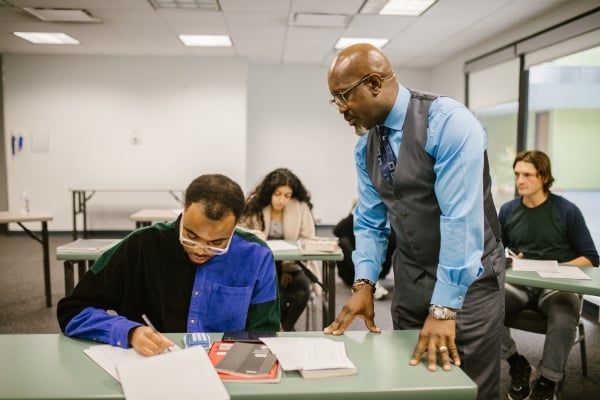IHE Piece on Constructive Dialogue and Oral Assessments in the Age of AI
Cambriae W. Lee and I just published a piece in Inside Higher Ed on why and how to use oral assessments. Check it out!

Welcome to AutomatED: the newsletter on how to teach better with tech.
Each week, I share what I have learned — and am learning — about AI and tech in the university classroom. What works, what doesn't, and why.
In this week’s edition, I highlight an IHE piece published today that I co-authored.
Earlier this morning, Inside Higher Ed published a piece I co-authored with Cambriae W. Lee of the Constructive Dialogue Institute. Below, I offer a synopsis of it, but here is the direct link if you want to check it out:
Roughly, our piece proceeds as follows:
The AutomatED AI-Immunity Challenge shows that AI tools are already sufficiently sophisticated to enable students to shortcircuit or shortcut complex assignments.
If — and we emphasize this ‘if’ — a professor is concerned about AI plagiarism in light of #1 above and want to try to prevent it, then there are two broad categories of options they can utilize:
Assign only in-class work.
Pair take-home work with in-class work so that students must complete the take-home work honestly to successfully complete the in-class work.
While assigning only in-class work may be feasible in some contexts, it isn’t in others. In those other contexts, oral assessments can be an effective alternative to engage and assess students, especially when paired with preparatory take-home work.
If a professor agrees and wants to utilize in-class oral assessments, there are a range of considerations to address beforehand, including:
Classroom culture and dynamics.
Student comfort and psychological safety.
Preparatory work using dialogue tools, guides, and trainings.
Once the professor has set the stage, there are many forms that in-class dialogue-based assessments can take, including two that we suggest (with AI-enhanced variations):
i. Small-group scenarios: The professor divides students into small groups, assigns each group a scenario or problem, and tasks them to address it through oral explanation or storytelling. Afterward, peers ask questions to explore aspects of the solution they may not fully grasp. Students are evaluated based on the viability of their solution, the effort put into its development, their ability to answer questions and the quality and constructive nature of their questions.
AI-enhanced pairing variation: Students utilize tools like ChatGPT and Bard to research their solutions at home before engaging in the classroom activity.
ii. Knowledge gap identification: Students are divided into groups, and each group explains a solution to a given problem (similar to the previous example). Students then work on identifying gaps in their own logic and knowledge. Instead of asking questions, peers point out gaps and offer insights to help fill these gaps.
AI-enhanced pairing variation: Students use their devices to access AI tools like ChatGPT and Bard to identify gaps in their knowledge. Through querying the AI tool and using it as a conversational partner, students discover new information and discuss the knowledge gaps within their group.
Check it out if it sounds interesting or useful to you!



